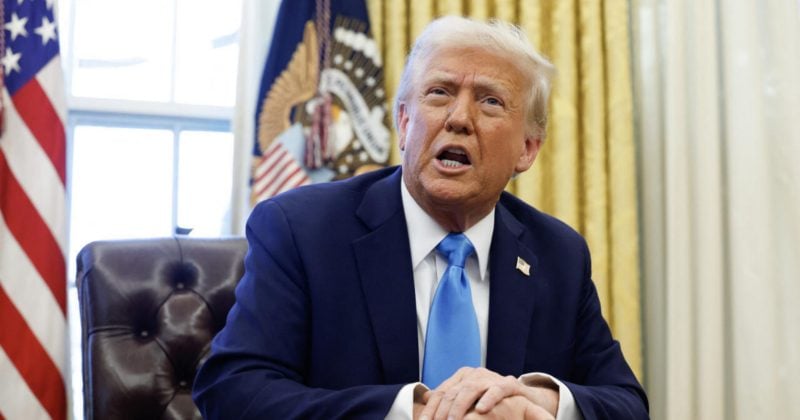On Mar. 31, 2025, Strategy (formerly known as MicroStrategy) bought $2 billion worth of bitcoins. The company now holds 528,185 BTC, representing over 2.5% of the total Bitcoin supply. While Michael Saylor, the frontman of Strategy, is widely celebrated as the biggest Bitcoin bull, some consider him a potential threat to the Bitcoin network.
Michael Saylor, a polarizing figure
In the 2020s, Saylor became one of the most prominent Bitcoin advocates. His company is among the top 10 Bitcoin holders, relentlessly spending millions and billions of dollars on BTC. Apart from growing the corporate Bitcoin reserve and promoting MicroStrategy stock, Saylor is active on X, sharing his views on the importance of Bitcoin for America, other countries, institutions, and individuals. He also consults U.S. officials on Bitcoin and has expressed eagerness to work with the Trump administration on cryptocurrency regulation.
Saylor sees his mission in introducing Bitcoin to financial institutions and other large-scale investors and providing them with Bitcoin on-ramp via MSTR stock. Saylor explicitly stresses that Bitcoin is a capital, comparing it to Manhattan real estate, gold, and other high-value investments but with the advantages of being easy to store, transport, and transact. On the surface, his strategy is simple: buy as much Bitcoin as possible. He has urged the U.S. government to do the same.
The Bitcoin race fueled by Saylor’s actions and evangelism is here. According to Architect Partners, around 25% of public companies will add BTC to their balance sheets by 2030. Several governments are already holding Bitcoin.
https://x.com/bitcoin_dad/status/1866110084067057707
Saylor’s approach to Bitcoin is unorthodox. It deviates from the original ethos of inclusivity, leaning instead toward reinforcing the leadership of U.S. banks in the global economy. In a sharply critical article titled “Michael Saylor doesn’t understand Bitcoin,” Frank Corva highlights the tension between Bitcoin’s anti-banking roots and Saylor’s mission to help financial institutions capitalize on it.
Corva reminds us that Bitcoin was meant to be an independent electronic cash and an alternative to USD. Saylor names Bitcoin a capital and not money, calling for endless accumulation of Bitcoin by the U.S. government while fostering USD-pegged stablecoins adoption around the world to cement the dollar’s hegemony, which is the opposite of what Bitcoin was created for.
In that sense, Strategy’s growing influence and Bitcoin concentration play an ambiguous role. On one hand, Strategy promotes cryptocurrency and expands access to alternatives when banks and fiat currencies may fail. On the other, it arguably funnels power and value back to the very institutions Bitcoin was designed to disrupt.
Some critics say Saylor’s visibility sets him up as a de facto “Bitcoin leader,” even though Bitcoin was explicitly built to function without one — a fact underscored by Satoshi Nakamoto’s anonymity. They fear Saylor’s personal views and influence could cast a shadow on Bitcoin’s decentralized philosophy.
#2 it’s not even a person who own the BTC it’s a publicly traded company overseen by the U.S. government. It is LITERALLY becoming what it set out to fight
— Paper Gains (@PaperGainsInc) December 24, 2024Bitcoin philosophy aside, many people are simply afraid that someday Michael Saylor will pull the rug, causing a critical Bitcoin price drop; others don’t like the very fact that so much Bitcoin is concentrated in the hands of a single company if not a person.
Some wonder: what happens if Bitcoin crashes before Saylor sells? Saylor has publicly stated he doesn’t plan to sell and even joked that he wants his private keys burned after his death.
Despite his cult status in some corners of the crypto community, others don’t fully trust him, citing MicroStrategy’s checkered history.
Saylor’s and Strategy’s legal problems
MicroStrategy went public in 1998. Its stock price grew tremendously in 2000, going from $7 to $333 in one year. Then, the price lost 62% of its value in just one day. As the dot-com bubble burst, the company announced restating its financial results as it overstated its revenues for 1998 and 1999, adding $66 million wrongfully. MSTR plummeted further after announcing a restatement for 1997, dropping to $33 by April 2000. The company was sued and lost $10 million in disgorgement, with top executives paying personal fines. Despite the crash, MicroStrategy survived and returned to prominence years later.
In 2022, Saylor was sued by Attorney General Brian L. Schwalb for alleged tax evasion. The case was settled in 2024 at an eye-popping $40 million tax recovery. Reportedly, Saylor has been trying to create a false impression that, while being a D.C. resident, he resides in Florida or Virginia–the states with lower personal income tax. According to Schwalb, Saylor was bragging about his tax evasion scheme. Saylor insisted that he was living in Florida. These cases undermined the trust of some people in the crypto community in Saylor.
Is Strategy’s Bitcoin bag a Damocles’ sword?
Distrust to Michael Saylor stretches to the extent that many people doubt that Strategy actually makes all these multi-million Bitcoin purchases. Some cite the BTC price drops that follow some of the massive Bitcoin acquisitions by Strategy as a sign that the purchases don’t take place in reality. Others wonder who sells Bitcoin to Strategy in such large amounts. People want to see Strategy’s addresses.
What are the adresses ? I start to dont believe that He bought, He should Show everyone openly that He really holds These BTC.
— Klaus ANders (@KlausANders6) March 31, 2025Arkham Intelligence identified 96% of Strategy’s Bitcoin addresses, confirming that Coinbase Prime and Fidelity are custodians. So, doubts about whether Strategy holds BTC have largely been put to rest. But concerns remain: the company’s Bitcoin bag now hangs like a Damocles’ sword over the market.
Let’s talk about the big fear: a rug pull. If Strategy ever dumped its BTC, the broader market could be severely impacted.
The option of a huge Bitcoin sell-off by Strategy doesn’t seem reasonable for the company. Although Saylor said Bitcoin will cost $13 million in 2045, some people point out that betting on Bitcoin’s growth is far from being the only strategy for Saylor as the structure of his business is much more sophisticated. Bitcoin is at the heart of it, so selling it makes little sense. However, forced liquidation is what raises actual concerns.
The company is expanding its debt to buy more Bitcoin by issuing convertible notes that other investors eagerly buy. It helps absorb even more capital for Strategy by increasing its debt. However, as the market matures and the BTC price gets bigger, buying more Bitcoin becomes costlier while liquidity slows down as more and more whales, including miners, corporations, and governments, prefer to hodl. It may draw a hurdle for the future Bitcoin acquisition-centered strategy.
As of press time, Strategy holds $44 billion in BTC against $8.2 billion in debt. The first quarter of 2025 was crypto’s worst performance in seven years, and MSTR stock has been volatile. However, Goldman Sachs analysts predict that it will take at least a 50% BTC price drop by 2027 to make MSTR investors turn away from Strategy, leading to a possible sell-off.
Saylor dismisses the probability of forced liquidation, saying that if Bitcoin goes to $1, Strategy will buy all the bitcoins. As he holds over 46% of voting power, he will probably be able to confront a liquidation. Anyway, we will see if the threat is real by 2027 when the first batch of convertible notes will mature.
Some Bitcoin enthusiasts remain optimistic. Even if Saylor did dump, they say they’d buy discounted BTC and move on. No single company, or person, can destroy Bitcoin.

















 English (US) ·
English (US) ·